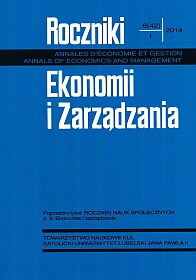The Potential Reversal Zone in Futures Contract Evaluation. Practical Application of the Harmonic Butterfly Pattern
Abstract
Investment risk (including futures contracts) depends on changes in financial instrument valuation (volatility). However it more concerns individual predisposition of a person taking investment decisions. It is an investor who decides what amount he can risk. While a technical analysis often shows the right time of concluding the transaction. In this article the author presents such a moment in the form of PRZ (Potential Reversal Zone). This moment is calculated by the Butterfly harmonic pattern, which is described by important Fibonacci ratios. The article includes charts showing the futures quotations and summary data tables containing the value of the stop-loss order, which prevents the loss and protects profits.
The essence of all the XABCD harmonic patterns (including the presented Butterfly pattern) is to calculate the right moment to initiate transaction as many days (sometimes weeks or months) as possible before such a moment appears. This moment is the point D, which is calculated using external and internal price retracements. From the placed charts and calculations it appears that the described structure is characterized by very high profitability (e.g. 492,31 % in 34 days on the market) at a certain acceptable, relatively low level of risk.
References
Bednarz K.: Formacja harmoniczna Gartley 222 jako sposób na zmniejszenie ryzyka i zwiększenie efektywności inwestycji na rynku kapitałowym, w: Rynki finansowe. Nowe wyzwania i możliwości, Warszawa: CeDeWu 2011, s. 203-221, Prace naukowe Wyższej Szkoły Bankowej w Gdańsku, t. 11/2011.
Bednarz K.: Zniesienia Fibonacciego jako skuteczny sposób zwiększenia efektywności inwestycji na przykładzie formacji harmonicznej Crab, „Roczniki Ekonomii i Zarządzania” 4(40)(2012), s.153-157
Bednarz K.: Podejmowanie decyzji inwestycyjnych na rynku kontraktów terminowych przy zastosowaniu formacji harmonicznej Bat – zwiększona efektywność inwestycji, w: Rynek kapitałowy. Skuteczne inwestowanie. Materiały konferencyjne, Międzyzdroje, 6-8 września 2012 (w druku).
Carney S.M.: Harmonic Trading. Profiting from the Natural Order of the Financial Markets vol. I, New Jersey: Pearson Education, Inc. 2010.
Elder A.: Zawód – inwestor giełdowy, Oficyna Ekonomiczna, Kraków 2006
Frost A.J., Prechter R.R.: Elliott Wave Principle. Key to Market Behavior, Gainesville, Georgia: New Classics Library, Inc. 200510.
Murphy J.J.: Analiza techniczna rynków finansowych, Warszawa: Wig-Press 2008.
Copyright (c) 2014 Roczniki Ekonomii i Zarządzania

This work is licensed under a Creative Commons Attribution-NonCommercial-NoDerivatives 4.0 International License.


